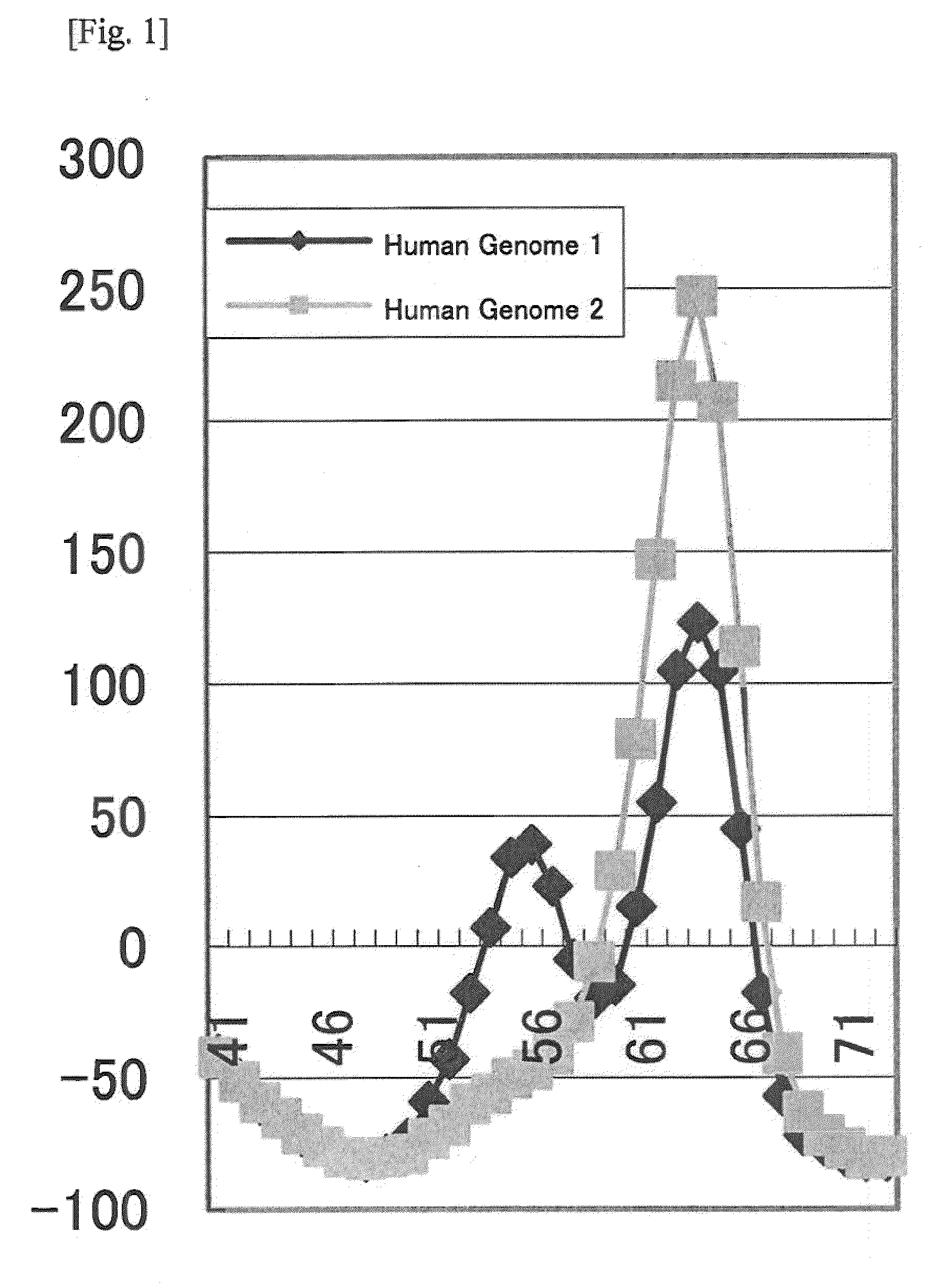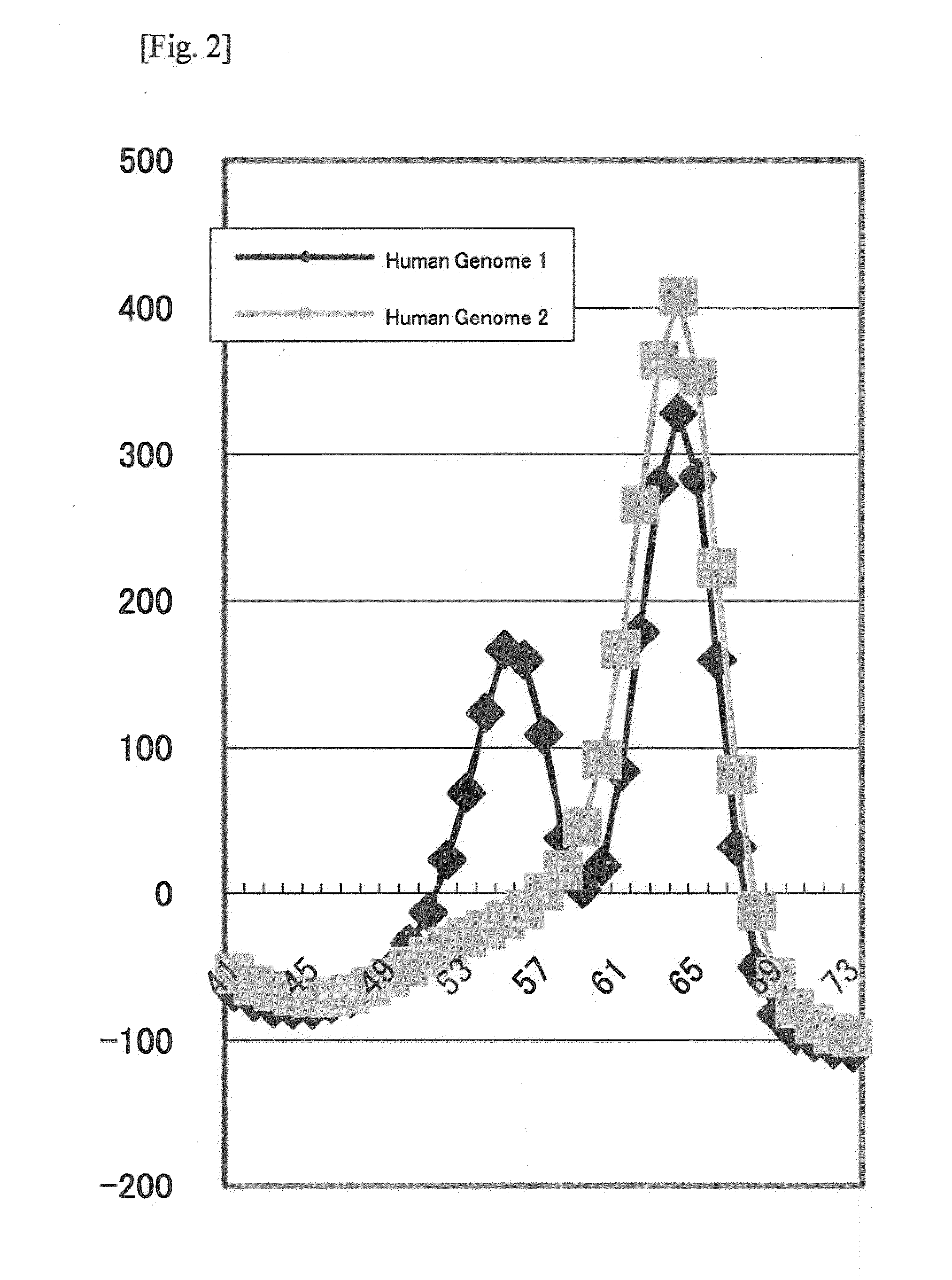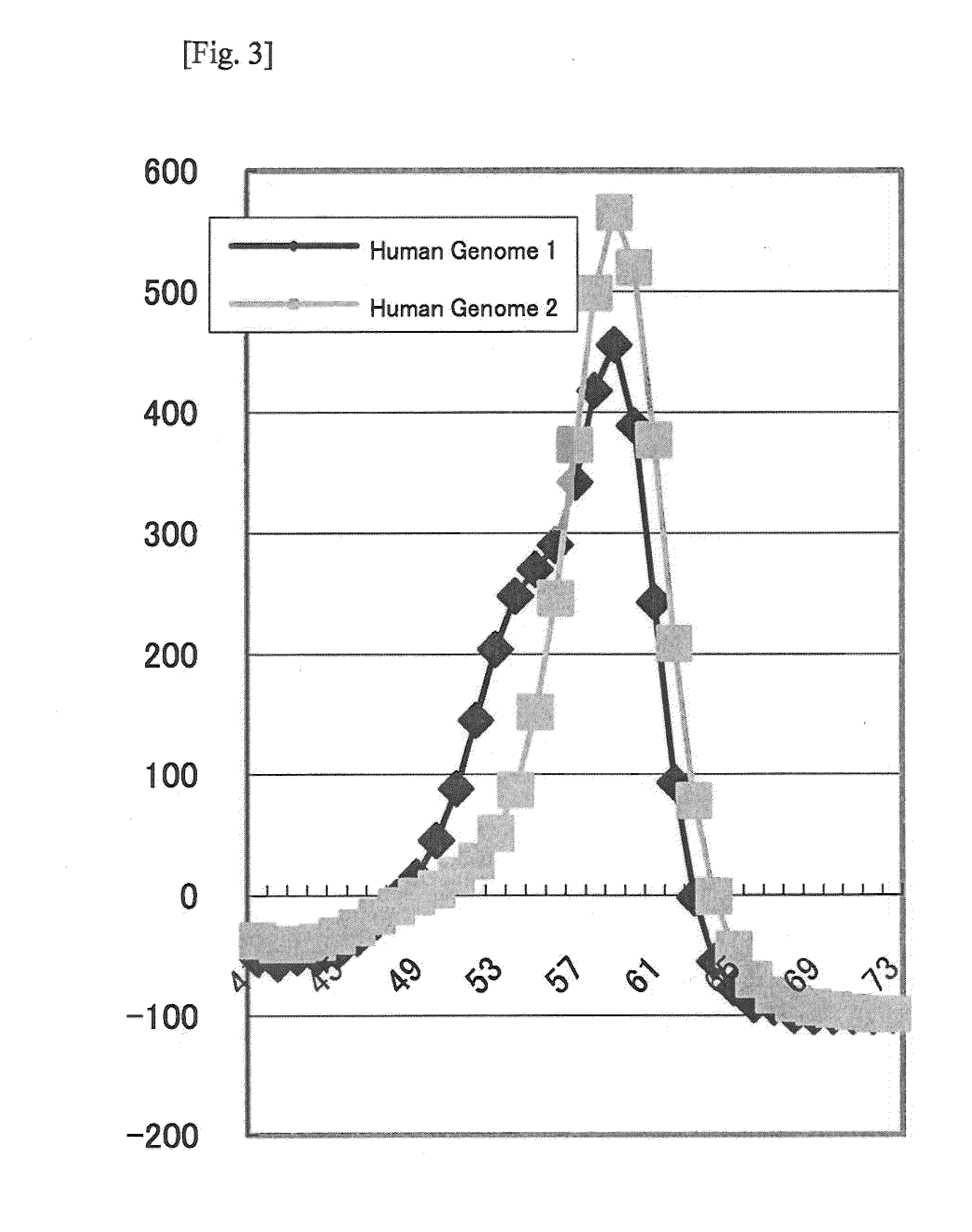Method for Detecting Polymorphism at Nucleotide Position -1639 of VKORC1 Gene, and Nucleic Acid Probe and Kit Therefor
a technology of vkorc1 and nucleotide position, which is applied in the field of detecting polymorphisms at nucleotide position -1639 of the vkorc1 gene, can solve the problems of side effects, high labor and cost, and epistemic or subcutaneous hemorrhage, and achieve high detection sensitivity, high specificity, and low cost
- Summary
- Abstract
- Description
- Claims
- Application Information
AI Technical Summary
Benefits of technology
Problems solved by technology
Method used
Image
Examples
example 1
Single, Purified Genome
[0062]Based on the nucleotide sequence including the polymorphic site at position −1639 of the VKORC1 gene (SEQ ID NO:1 (wild type)), the primers shown in Table 2 were designed such that the polymorphic site can be amplified. In table 2, the positions of the F primer and the R primer are represented as the positions in the nucleotide sequence shown in SEQ ID NO:1. The position of the probe 1 is represented as the position in the nucleotide sequence shown in SEQ ID NO:2.
[0063]Thereafter, the probe shown in Table 2, which has C at an end, was designed.
[0064]In Table 2, the position of the probe 1 is represented as the position in the nucleotide sequence shown in SEQ ID NO:2. P at the 3′-end indicates that the 3′-end is phosphorylated. Labeling with TAMRA was carried out according to a conventional method.
TABLE 2SEQ IDNameSequencePositionNO:merTm (° C.)VKORC1 F primer5′-ggaagtcaagcaagagaagacctg-3′47-7032457.58VKORC1 R primer5′-aatgctaggattataggcgtgag-3′121-99 423...
example 2
Single, Whole Blood
[0070]The reaction was carried out in the same manner as in Example 1 except that whole blood was used as the sample.
[0071]As a result of the PCR and the Tm analysis using the probe shown in Table 2, in terms of the human genome 1, peaks for TAMRA were observed at about 56° C. and about 64° C., and, in terms of the human genome 2, a peak for TAMRA was observed at about 64° C. (FIG. 2), similarly to the results in Example 1.
example 3
Multiple, Purified Genome
[0076]The reaction was carried out in the same manner as in Example 1 except that the PCR reaction liquid having the composition shown in Table 8 was used.
[0077]The emission wavelength and the detection wavelength in the Tm analysis were 420 to 485 nm and 520 to 555 nm (BODIPY FL), respectively, or 520 to 555 nm and 585 to 700 nm (TAMRA), respectively.
TABLE 8In 50 μL of the PCR reaction liquid:1 × reaction buffer1.25 U Taq polymerase1.5 mmol / L MgCl20.2 mmol / L dNTP14% (v / v) Glycerol0.5 μmol / L VKORC1 F primer (Table 2)1 μmol / L VKORC1 R primer (Table 2)0.4 μmol / L VKORC1 probe 1 (Table 2)2 μmol / L CYP2C9*3 F primer (Table 9)1 μmol / L CYP2C9*3 R primer (Table 9)0.2 μmol / L CYP2C9*3 probe 1 (Table 9)
TABLE 9As the CYP2C9*3 primers and probe, the followings were used.SEQ IDNameSequenceNO:merTm (° C.)CYP2C9*3 F primer5′-cggagcccctgcatgcaa-3′81857.04CYP2C9*3 R primer5′-aatgatactatgaatttggggacttcgaa-3′92957.23CYP2C9*3 probe 15′-ggagaaggtcaaGgtatc-(BODIPY FL)-3′101745.44
[0...
PUM
| Property | Measurement | Unit |
|---|---|---|
| Temperature | aaaaa | aaaaa |
| Temperature | aaaaa | aaaaa |
| Temperature | aaaaa | aaaaa |
Abstract
Description
Claims
Application Information
 Login to View More
Login to View More - R&D
- Intellectual Property
- Life Sciences
- Materials
- Tech Scout
- Unparalleled Data Quality
- Higher Quality Content
- 60% Fewer Hallucinations
Browse by: Latest US Patents, China's latest patents, Technical Efficacy Thesaurus, Application Domain, Technology Topic, Popular Technical Reports.
© 2025 PatSnap. All rights reserved.Legal|Privacy policy|Modern Slavery Act Transparency Statement|Sitemap|About US| Contact US: help@patsnap.com



